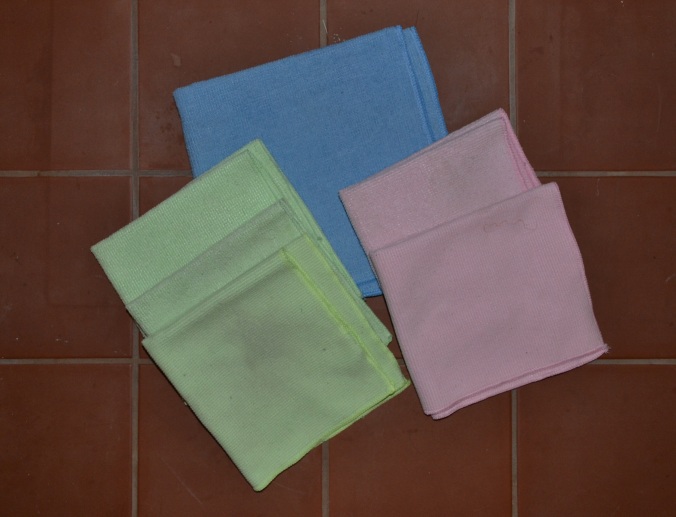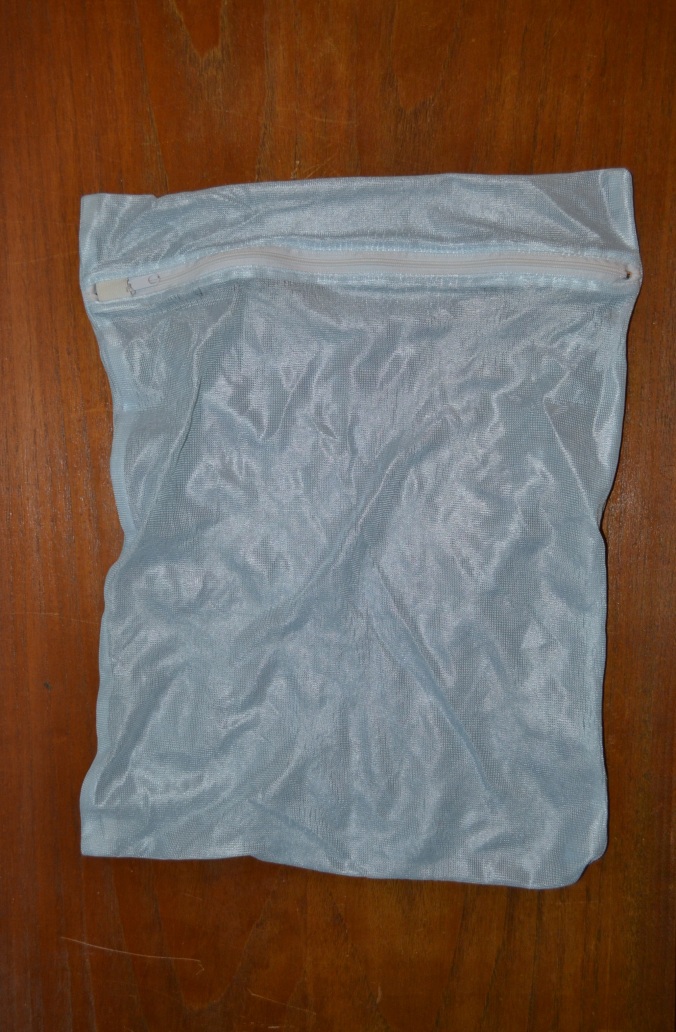03.07.2017
0600


You know when a new product comes out, and it promises to eliminate chemicals and cut down on the process of cleaning, and then we wait ten years or so, and figure out the drawbacks from this said new product? Yeah, that’s what this post is about. So when microfiber cloths hit mainstream media, I purchased a set just to try it out. They worked as the company had stated, they worked efficiently and I never had to use any chemicals ever again. They seemed like the perfect clean up rags for tile surfaces, mirrors and I even tested it out on some pen marks on room walls.
Because I used these rags mostly for cleaning up and wiping down surfaces that were wet from water, I washed them when it was necessary. The first time I washed them, they stuck to the rest of the rags in the load so after that, I used a laundry dedicates wash bag to contain them.
Then more research started popping up, and here’s what was discovered…
What are microfiber cloths?
Microfiber cleaning cloths are made of microfiber fabric comprised of polyester and nylon. Microfibers are much thinner in diameter than human hair. Those used in cleaning textiles are split in a way that creates spaces within each fiber. Regular microfiber, such as Split microfiber vs cotton that used on furniture or in clothing, is soft but not useful for cleaning because it is not absorbent. Conversely, the spaces within the split fibers in split microfiber can absorb up to 8 times their weight in liquid and trap dust and germs so they are not spread around or released into the air. Studies have found split microfiber products can reduce the bacteria count on surfaces much more effectively than cotton. Check a product’s packaging to determine if it is split microfiber or not. If it’s not labeled, you can check by running your hand over the cloth. If it doesn’t grab at the imperfections of your skin, then it’s not split microfiber.
Uses for microfiber cloths
- Dusting surfaces. Simply wipe the surfaces with a dry cloth. No sprays are needed because a static electric charge that attracts and traps dust develops when the cloths are moved across a surface.
- Cleaning mirrors and glass. Slightly dampen a portion of a cloth and rub the glass surface with it. Once you’ve removed any spots or smudges, use the dry portion of the cloth to dry and polish the surface.
- Cleaning counters. To superficially clean counters, use dry cloths to pick up surface dust, dirt, and hair. To deeply clean counters, slightly dampen a cloth and use your usual cleaning spray.
- Washing dishes. Use just as you would any other dishcloth.
- Mopping floors. You can use a dry cloth to pick up surface dust, dirt, and hair or a slightly damp cloth to wipe down your floors with your usual cleaning solution. You can also purchase mop heads made of microfiber fabrics. Many people who own Swiffer-type mops designed for disposable mopping pads simple attach a microfiber cloth to the mop instead of a disposable pad.
Cleaning microfiber cloths
If you take good care of your microfiber cloths, they should continue to perform at their peak for years.
- Remove trapped dust, dirt, and hair by pre-soaking the cloths in water and a mild detergent.
- Wash the cloths in cold water (hot water damages the fabric so it is no longer effective). Only wash the cloths with similar fabrics because they will pull lint out of cotton or other materials during the washing process. Bleach and fabric softeners shouldn’t be used (bleach deteriorates the fabric and fabric softeners clog the spaces in the microfibers so they are no longer absorbent).
- Line dry the cloths or use the lowest heat setting on your dryer and do not iron them. This prevents heat damage to the microfibers.
Environmental ramifications
There is debate over the extent to which microfiber cloths are environmentally friendly. They are beneficial to the environment in that they aren’t tossed out in the trash after each use like paper towels, nor do they need replaced as frequently as cotton cloths. Moreover, they significantly reduce the amount of water and cleaning products needed when cleaning.
Despite these advantages, microfiber cloths are made from nonrenewable resources and are not biodegradable. There is also concern about their role in microplastic pollution. This sort of pollution occurs when tiny bits of polyester and acrylic rinse off of fabrics during washing and end up collecting on the coastlines of densely populated areas. Fish can ingest the harmful debris, as can humans when they eat affected fish.
Inevitably, choose your products wisely. There are positive aspects and negative aspects of every product you purchase. I’ll probably keep my microfiber cloths to wipe down mirrors still, but I’ll switch out for cotton rags to wipe down my surfaces instead. I would like to get rid of them, but that would also mean that because these are not recyclable, they would inevitably go to the landfill. I have used them to protect my glassware and dishware when I was moving, so that seemed fine. Pick and choose how you want to use these cloths depending on your lifestyle and routines. Micro plastic pollution is everywhere and it’s up to us to change our thinking habits about the products we use and how we go about discarding them. Maybe we will not be able to eliminate the pollution, but we can certainly reduce. Also, sometimes a new product, isn’t as great as it will seem to portray; if they system isn’t broke- don’t fix it.
Hotel Linen Suppliers In Chennai And Hotel Linen Supplier:
Linen is one of the most comfortable fabrics, which has the quality of quick-drying, and strong absorbent than the cotton. The hotel linen supplier works hard to provide pillow covers, mattress covers, cushions, high-quality linen bed sheets, etc. They are one of the best hotel linen suppliers in Chennai provide quality fabric products at reliable prices and are the best hotel bedding suppliers. It is odor resistant and highly durable.
LikeLike
Microfiber cloths are made from a combination of two synthetic polymers — polyester and polyamide (nylon). Unfortunately, microfiber is basically made of plastic. Petroleum products are used to create plastic polymers that are spun into these types of cloths. If you want to hang on to them for certain tough cleaning situations, you can do that. You can also try to use a cotton cloth for most of your cleaning needs, if that’s a better alternative. not all cleaning situations will call for microfiber cloths to be used, so you can choose the best solution for your needs.
LikeLike
Yes, they are not soft as cotton cloths, or other cloths that are on the market, because microfiber cloths are basically made of spun plastic.
LikeLike
Yes, mine always felt a bit sticky and rough, but that’s due to the polymer material that is used to create the cloths.
LikeLike
Is it normal to use microfiber to fill like its stickery and rough?
LikeLike
Is it normal for microfiber to fill uncomfortable?
LikeLike
I have a few itleast 3 difrent types of microfiber clothed all in donations i have receved sence i moved in and had nothing. They all fill like they want to stick to you and leave fibers but not bad. Mom hates them and I dont know what to do with them. Is this normal.
LikeLike
That’s a good idea, I’l definitely check to see if they can be recycled or if they have a warranty. Thank you so much for the information!
LikeLike
Your cloths appear to be a brand I am familiar with. If so, check this information with your consultant. The brand I am thinking of has been tested, and is not shedding like regular microfiber. You can be confident it is safer for the environment. Also, they are recyclable! They do have a 2 year warranty, but can be sent back to the company to be recycled instead of discarded. This company makes some of their products from recycled materials, and even uses ocean bound plastic for their bottles! Contact your consultant for more info.
LikeLike
I admire your work, thanks for all the informative posts.
LikeLike
Greetings from Ohio! I’m bored at work so I decided to check out your website on my iphone during lunch break. I love the info you provide here and can’t wait to take a look when I get home. I’m shocked at how fast your blog loaded on my cell phone .. I’m not even using WIFI, just 3G .. Anyways, great site!
LikeLike